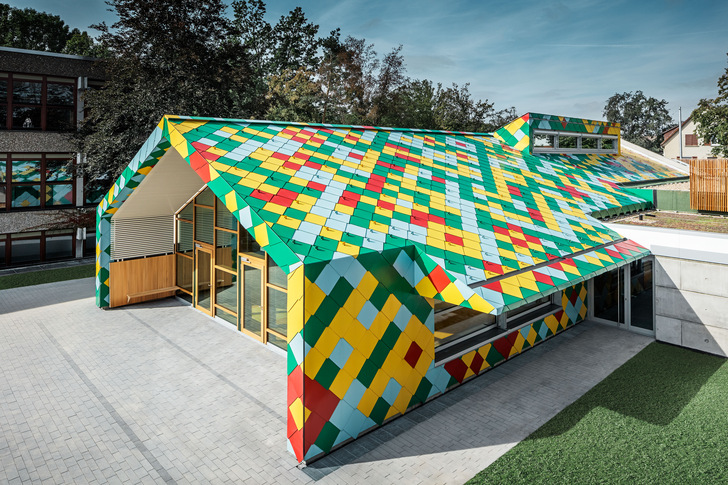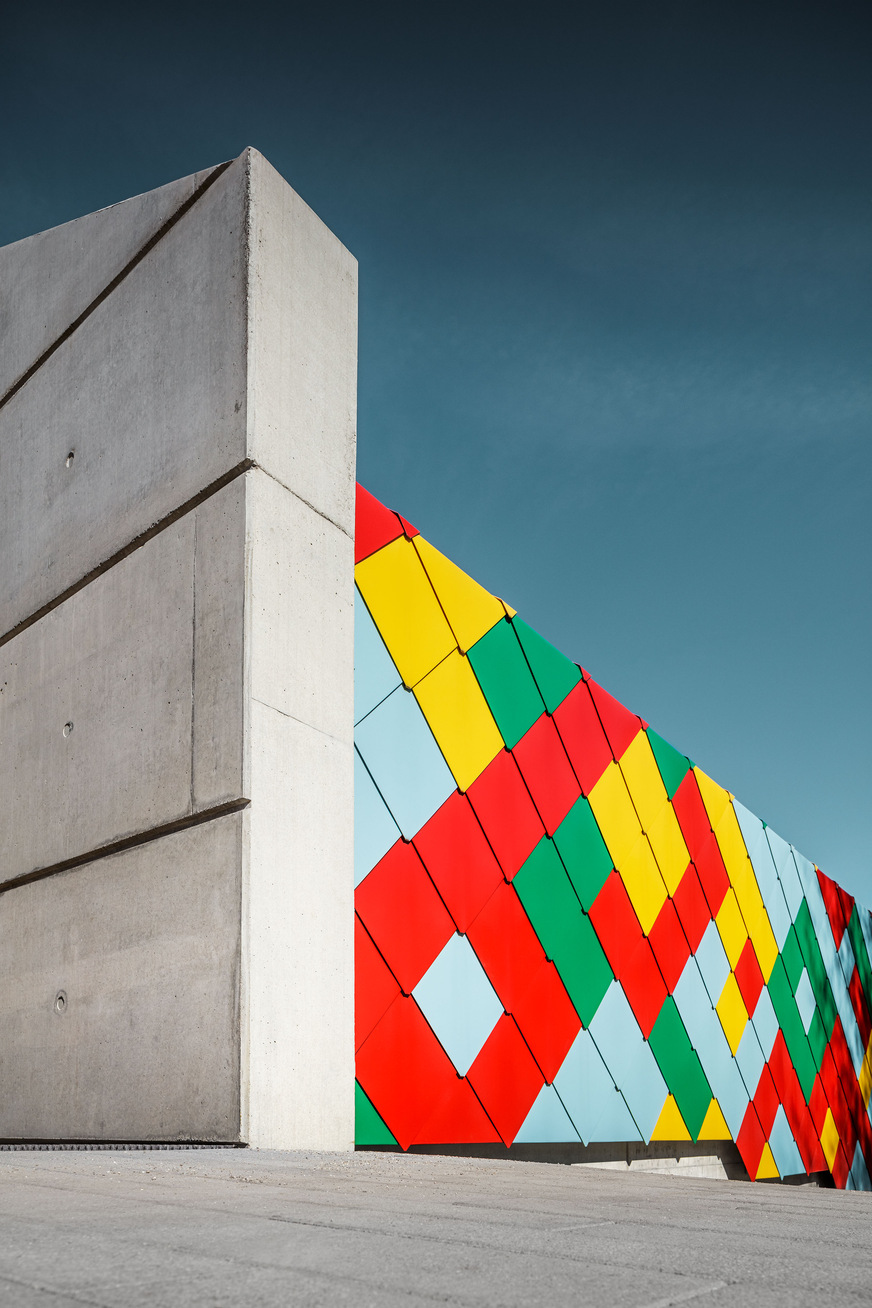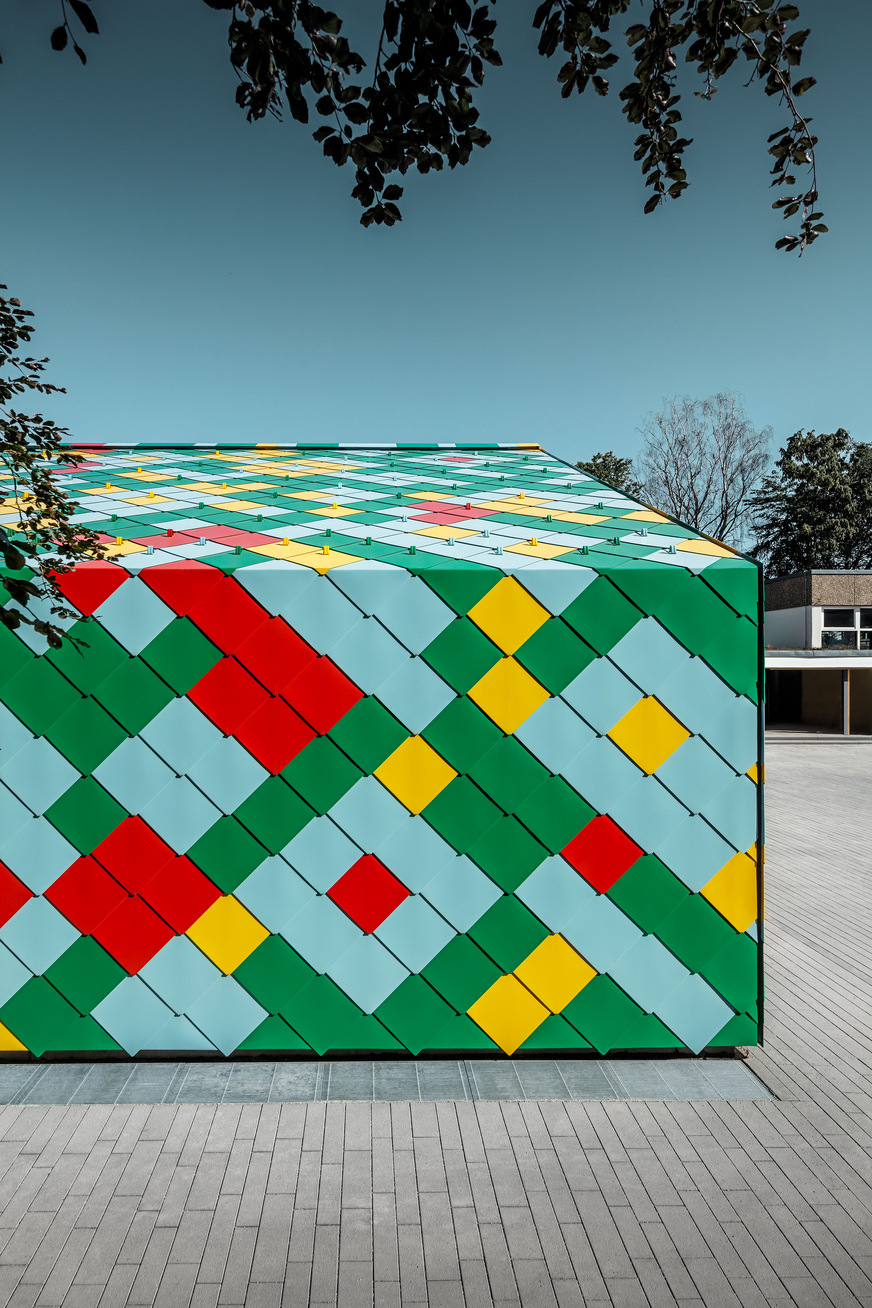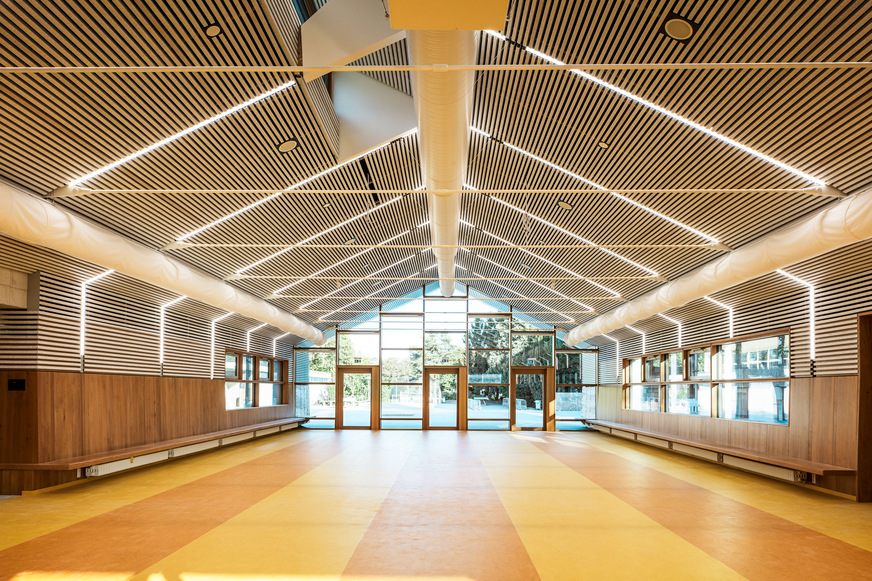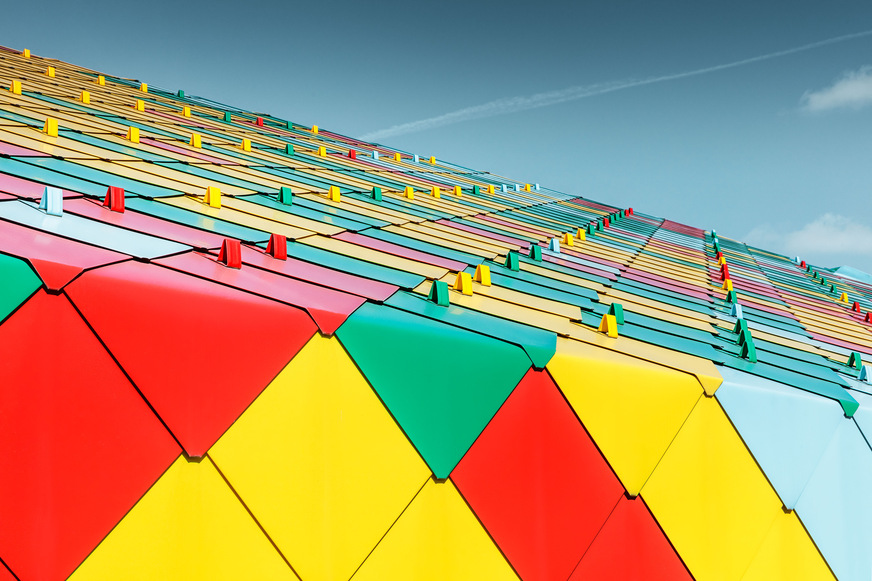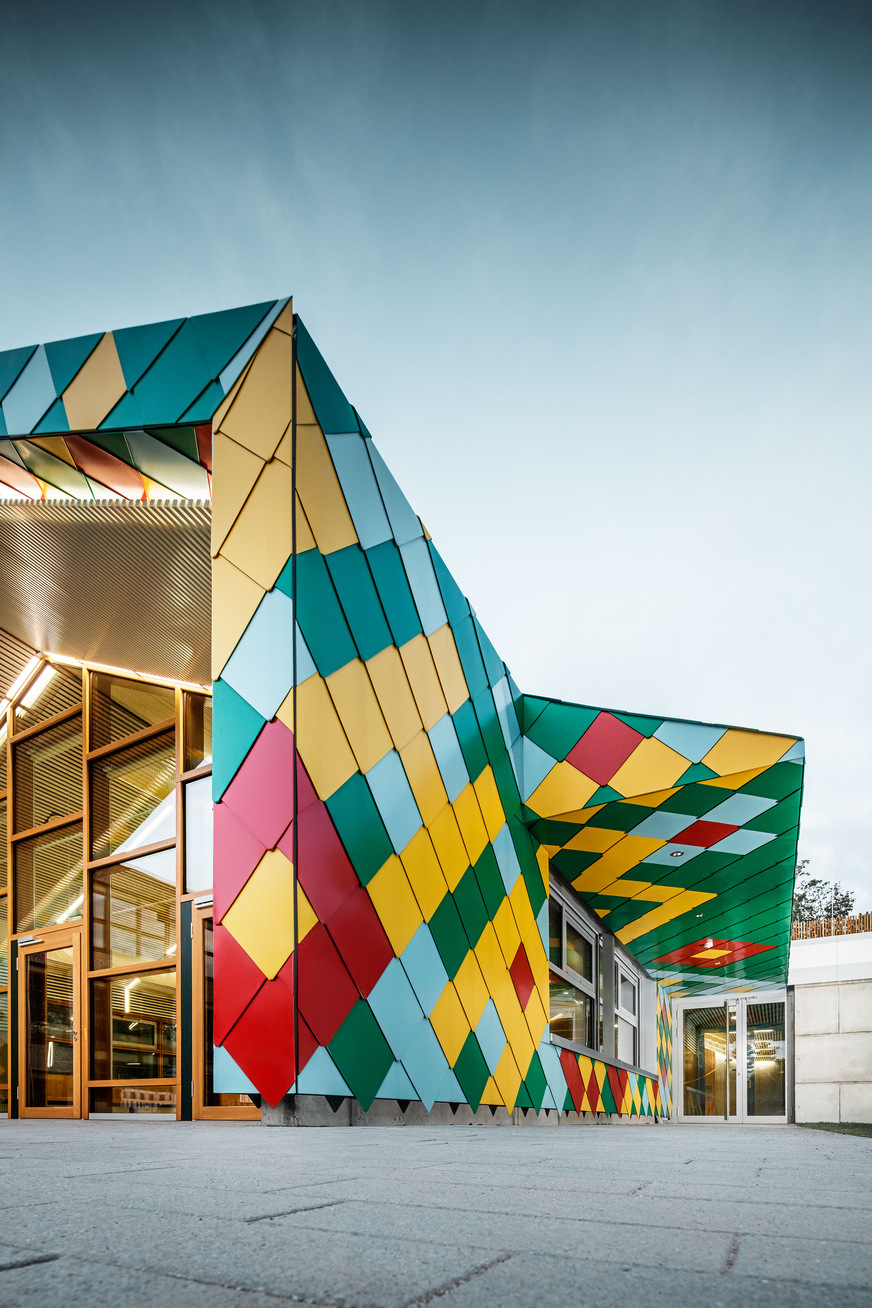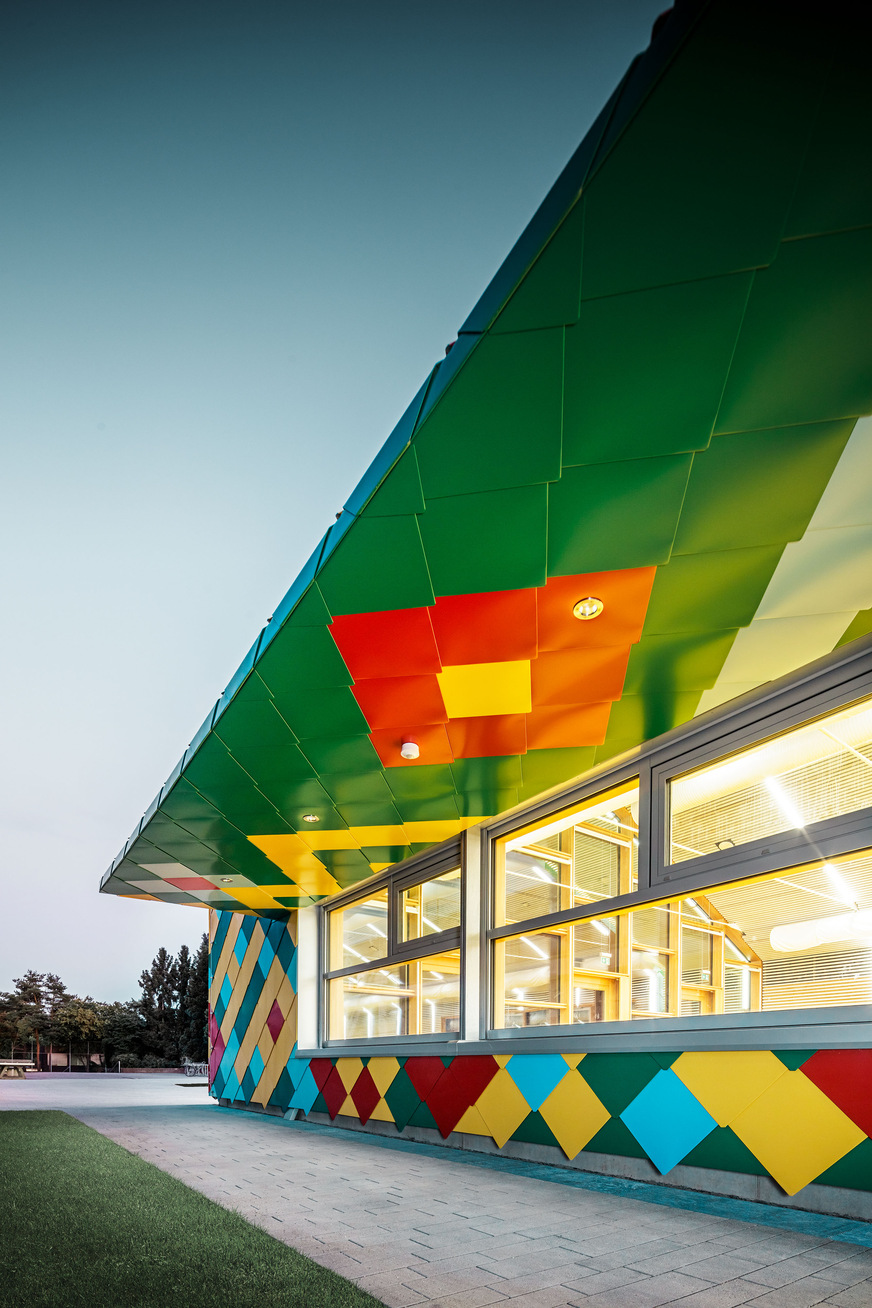The entire school grounds were characterized by 1960s charm exuding from the two buildings.
Functional buildings, lots of concrete and little personality. The two schools—the Anne-Frank-Gemeinschaftsschule and the Heilbrunnenschule— shared the school grounds; the roughly 600 students enrolled in the two schools needed a new cafeteria. Conceptual drafts were solicited from hammeskrause architekten, who stood out with an atypical concept. Their idea: after deciding on the building’s core structure, to design the façade with the input and assistance of students from both schools. The school administration office, building construction authorities and teachers from both schools supported the bold and unusual project, which was new ground for everyone.
“It was not clear initially, what result this process would yield,” admits Nils Krause from Stuttgart architect agency hammeskrause architekten.
“We always approach tasks with a certain degree of distance and abstraction. A macro-to-micro approach: from the globe, to the continent, to the country, to the city, to the neighbourhood to the street,” says the experienced architect of his agency’s approach. The cafeteria was initially a very “sensitive situation,” as both schools with their different areas of specialization had to be taken into consideration. The vision of project head Joep Kuys was: “We wanted to create a campus heart that beats for every student. A large, central room that opens up to the schoolyard, integrated into the green areas and spatial rounding of the school grounds.”
A house with a gabled roof, which harmonises with the surrounding area, will be a symbol thanks to its unique shape. The form is reminiscent of a tent. It’s as if the building screams out:
“I fulfil a different purpose.”
To this end, the roof and walls were constructed using the same material. “It’s like a case,” says Joep Kuys. “We wanted to cover everything with the same skin—from the base to the top.”
Big energy in kid-size packages
But it was here, at this point in the draft for the roof and the wall, where there was the chance to place the colour design of the diamond shapes in the hands of the kids. They should be the ones to design their campus hub, their cafeteria. There were six workshops with four groups and a total of twelve students each, where the façade you see today was created.
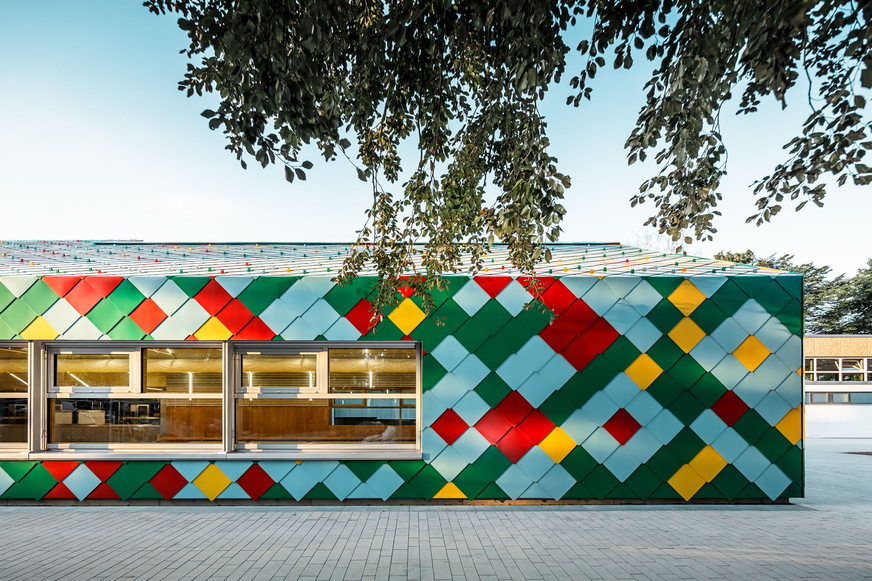
Prefa
After a few weeks, four concepts were finished: “Circus Tent,” “Flower Meadow,” “Picnic Blanket” and “Tuned by Letters.” We also went a new direction here, with the children discussing their work and deciding upon which design elements to use and incorporate from the other designs. In every concept, there is one element from every child. This concept was then implemented in full fidelity and no modifications were made.
“If we were going to do this, then we were going to realise what the kids came up with,”
says Nils Krause. “Collaborations like this rarely work on large projects, which was what made this project all the more rewarding,” says the architect. “It was important to us to show that we took the kids’ ideas seriously, to work with the kids’ energy and to learn how to accept these things,” continued Nils Krause.
The cafeteria stands out with its simple form and its colourful façade. On the street side there is an exposed concrete pediment; the roof has no rain gutters. Water simply streams down the façade. For the brightly coloured external façade, roof and wall rhomboid tiles 44×44 were used in the bespoken colours broom yellow, carmine red, standard mint green and pastel turquoise
Embody participation
Not only the resulting work standing at the school grounds impresses but also the approach. Embodying participation in this manner is entirely new and perhaps trailblazing. This philosophy is not only the vision of hammeskrause architekten but is something they put into practice.
“We want to make a contribution with our buildings,” says Nils Krause. He then said that as an architect he has a chance to design. hammeskrause architekten approach their projects with a large degree of empathy and desire. Listening is part of their job. “What does the user need?” is a central question. The Stuttgart agency focuses on research buildings and buildings for health and patient care. They are always complex jobs, which have to be adjusted to the context.
“For us, it’s all about the space and not about the representation.” Joep Kuys continued, saying “you first need to know how users think, how people experience the building.” Then the idea is created and, when the building is finished, you can walk through the idea.” That is architecture.
Having a say and having a blast
Looking back, the project was a fantastic success for the two dedicated architects and serves as proof of just how far you can go when working “together.”
“Sometimes we lack the courage to do something new together. We managed to pull it off on this project,” says Krause. “We created a shared identity for the students of both schools. It was a matter of letting the users have a say and have a blast.”
The 1000-piece puzzle
Yellow, red, green and turquoise—it was a colourful job to say the least that Simon Altvater and his team took on. 4.000 bright diamonds form the façade and roof of the cafeteria for two schools in the Stuttgart neighbourhood of Möhringen.
“It was like one of the 1000-piece Ravensburger puzzles,” recalls Simon Altvater, CEO of Altvater metal works, the first time he saw the draft of the new cafeteria at the Anne Frank and Heilbrunnen schools. “Initially, we were unable to picture it at all,” says Altvater, who was certain of one thing from the beginning: It was not going to be a standard, nor an easy job.
“The most demanding jobs are always the best,” adds master tinsmith Massimo Campanale, who explained that every one of his workers wanted to work on the job. The long-standing metal-works company from Nufringen has a total of 60 employees, 22 of which are fitters. For the first phase, three to four of his workers were on site, later usually two fitters.
They worked in strict accordance with the blueprints. The tradesmen had a pattern of diamonds, which were to be mounted in their respective colour. The blueprints laid out everything in detail and everything was implemented accordingly. “We only modified a single shingle in the pattern,” recalls Campanale. In addition to the pattern, there were a host of other challenges to solve on site during construction.
Thanks to their skill and expertise, the pros were able to devise feasible solutions for the trickiest tasks. “It’s important to make sure that it not only looks great afterwards, but also that it fulfils its practical purpose,” master tinsmith Campanale emphasises.
The sweeping interest of the students was also quite atypical. “Anywhere from ten to fifteen kids came over during every recess and just stood around watching us work,” says Campanale. The kids from the two neighbouring schools were not only involved in drafting the concepts, but were also able to monitor the project’s progress.
Although Simon Altvater and his team took on more and more such projects in recent years, the cafeteria project remains something unique. “All you need to do is take a look at the street and the cars driving past. They stop, they crawl past to get a closer look and are amazed,” says Campanale.
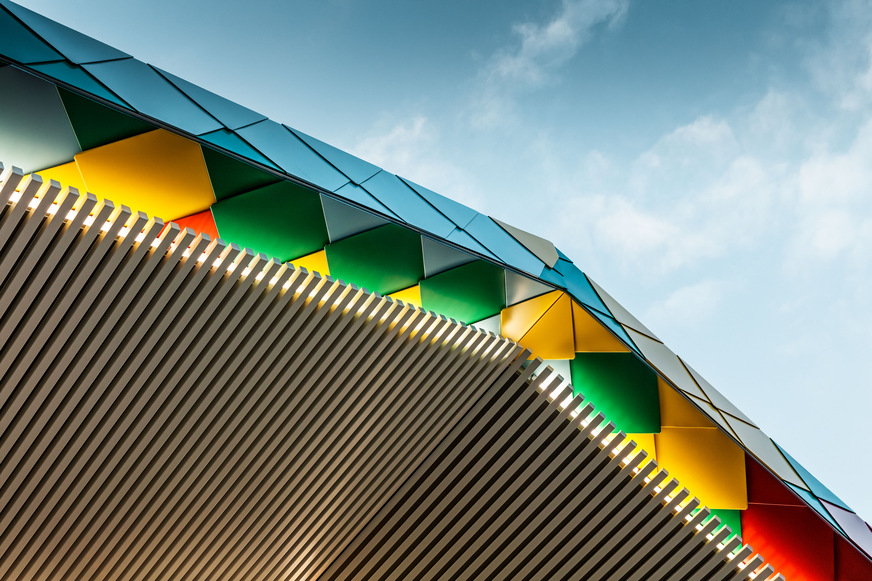
Prefa
“The city certainly needed to have the requisite courage to realise this project,” stresses Simon Altvater, who is the third generation of his family to run the metalworking company. He continues to solicit advice from his father and senior director and to get his “gut feeling” on something. He always motivated him and pushed him further, so that Simon never had any doubts that he’d take over and further develop the family business.
“His enthusiasm rubs off on everyone around him,” says the younger Altvater. “I grew up with the employees and even lent a hand as a young boy,” he says.
“The best part about the profession,” he says, “is that you create something. It’s like carpentry. You not only put something together, but you also design it. You can see what you’ve created,” says the enthusiastic trades- man emphatically. To remain successful in his profession today, it takes a host of various aspects, including “imagination, experience and innovative thinking.”

